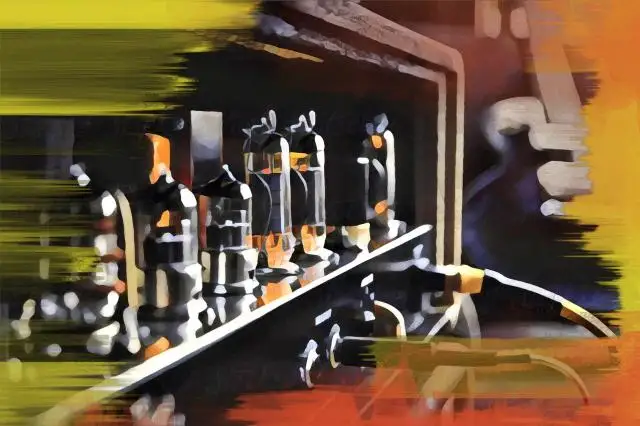With music technology evolving at a groundbreaking speed, don't you find it astounding that so many musicians and audiophiles look for the analog warmth of vacuum tubes, which were already obsolete in the 1960s?
The truth is, there’s nothing quite like the sonic characteristics of vacuum tubes. That vintage and immersive sound, and the timeless feel they add to music have been imitated countless times with other technologies, but never faithfully replicated.
Vacuum tubes are still regarded as the best way to achieve a natural and warm sound, be it in a recording studio or high-quality listening room. So, today we’ll delve deep into the analog world, describe how vacuum tubes work and how they’re used.
Vacuum Tubes
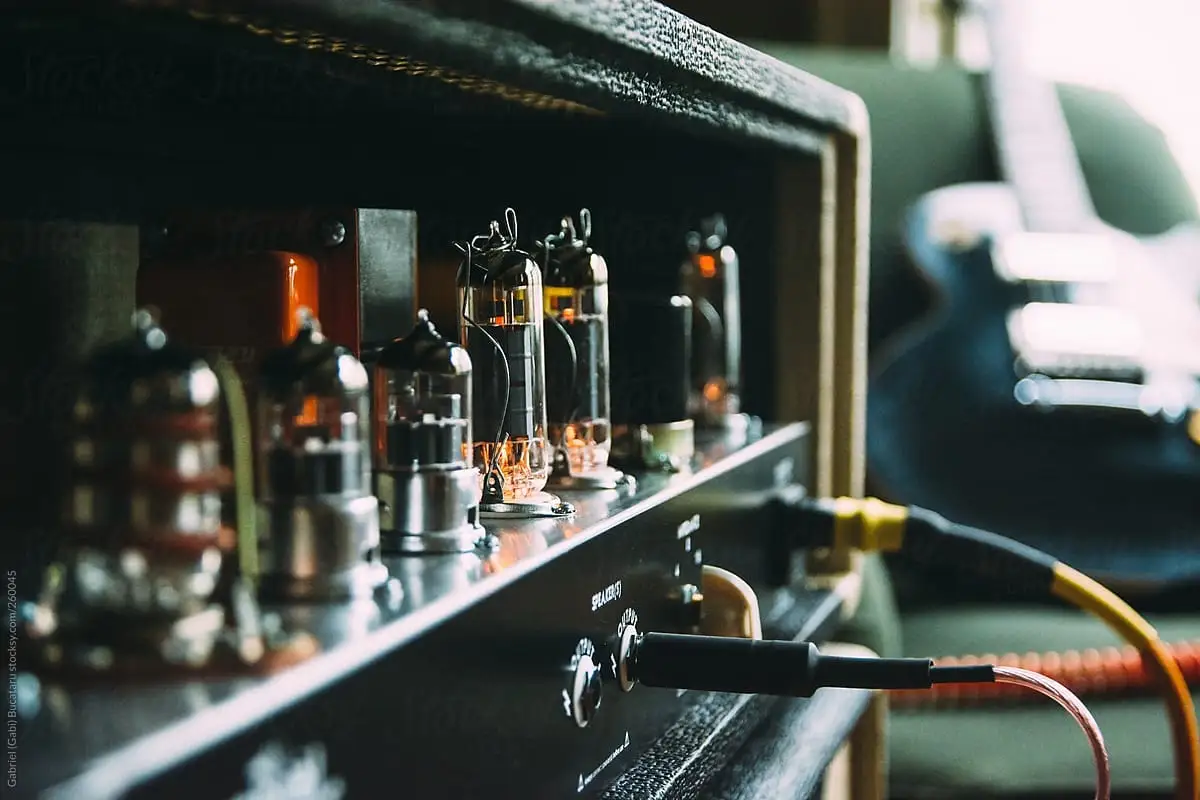
A vacuum tube is an electronic component that regulates the flow of electric current in a high-vacuum environment. It’s made up of a cathode (which emits electrons), an anode (which collects electrons), and one or more control grids that modulate the electron flow between them.
It’s a technology that’s been around since the dawn of the 20th century, and was widely used in early electronic devices like radios, televisions and early computers. However, by the 1960s, vacuum tube devices were mostly replaced by ones run by transistors.
In audio recording and reproduction, tube amplification has become something of a musical Holy Grail due to a combination of natural distortion, warm sound, and vintage feel. For these reasons, it's very common to find tube amplifiers in professional recording studios, as well as in high-end audio reproduction systems.
Vacuum tube amplifiers, especially those with single-ended designs, have seen a massive comeback over recent years, giving them a cult status that resulted in very high prices and limited availability.
Despite the technological superiority of solid-state amps, tube gear has many positives, like their high input impedance, which improves signal preservation, and the unique distortion characteristics of tubes, which we'll talk about more later. Finally, tube rectifiers (or rectifier tubes) often offer a smoother voltage regulation, which is a crucial element of valve amps' classic sound.
How Do They Work?
Vacuum tubes make use of a phenomenon called thermionic emission . In this process, the tubes use heat to release electrons from a cathode, which then move toward a positively charged anode. The flow of electrons is controlled by grids placed between the cathode and anode, meaning that the amount of current passing through can be adjusted.
What Makes Them Popular?
Despite the more convenient solid-state technology, vacuum tubes are still extremely popular, because they can create a unique sound with harmonic distortion and soft clipping that many music enthusiasts love.
Tube amplifiers produce a warm sound that many musicians prefer over the "sterile" sound of solid-state amplifiers. Most of the iconic rock albums of the 20th century were made using analog amplifiers and recording gear, so both musicians and listeners tend to associate that sound signature with the music that defined us.
Vacuum tubes also tend to be more dynamic and expressive, which means the musicians have more control over how their instruments will sound. They also offer a better response when playing nuances, giving a more hands-on experience when crafting a sound.
Vacuum tubes are also popular in home audio setups and hi-fi systems. Audiophiles who're into a warmer soundstage appreciate how tubes deliver less distortion at both low and high frequencies, bringing to life a richer sound.
Unlike solid-state devices, tube amps generate even-order harmonics, which are more pleasant to the ear. Plus, they have a gradual and more natural clipping curve when saturating, meaning that tube amp overdrive feels more organic and cohesive.
Tube Amplifiers for Musicians
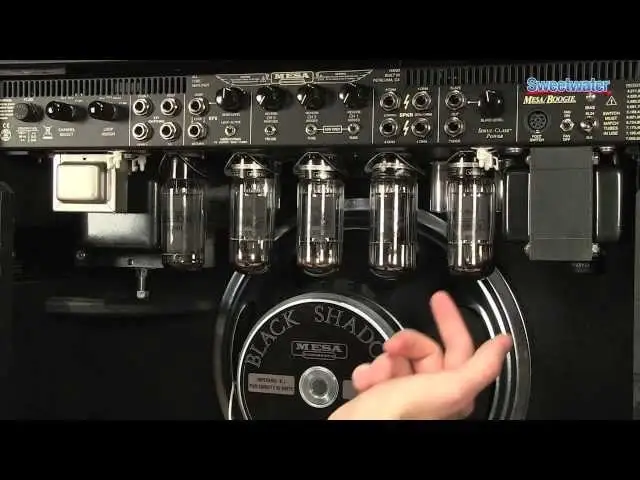
If you're into rock music or any of its evolutions, tube amplifiers are definitely something you should look into. They're used by guitarists, bassists, and keyboardists who want to create a rich and organic sound, and I challenge you to find a serious recording studio that doesn't have a VOX AC30 in its arsenal!
The sound signature valve amplifiers offer is unique, but it doesn't mean that it's the perfect option for all musicians. Let's take a look at the differences between vacuum tube amps and other equally popular options, such as solid-state amplifiers and amp simulators.
Tubes vs. Solid State
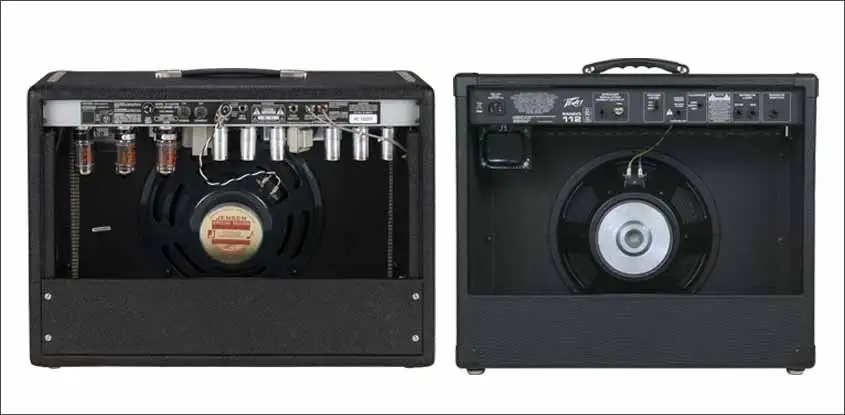
The most obvious comparison is between tube and solid-state amps. If we ignore personal taste, both options have their pros and cons.
Tube amps have a rich harmonic sound and smooth distortion that their solid-state counterparts can’t replicate. As a musician, with a tube amp you feel more in control of your sound, allowing you to easily recreate the sound of the artists you love.
However, valve amps also come with some nuisances. They’re usually heavy and bulky, they require regular (and expensive) maintenance, and sound best when pushed to their limits, so likely you won’t be using yours for bedroom practice.
Solid-state amps are more convenient in many ways. They’re cheaper, more durable, and have a more consistent sound at all volume levels. On the downside, they don’t have the articulated and rich tone of tube amps. Also, solid-state amps don't offer the organic saturation of tube amplifiers, particularly at full power.
The reasons behind the different sounds are the amplification methods: solid-state devices use active devices like transistors, which are more power efficient but can cause phase shift and other sound artifacts. On the other hand, tube amplifiers use components like beam tetrodes that create smoother sound curves.
Also, crossover distortion is a common issue in solid-state amplifiers. This is a situation when the transition between output devices generates a harsh sound. Tube amplifiers, and especially those with single-ended designs, create a cleaner signal with less unwanted distortion, even when you crank them up.
What Are Transistors?
First introduced in the 1940s, transistors made vacuum tubes obsolete in various fields, due to their smaller size and lower power consumption.
In music, transistors are semiconductor devices used to amplify or switch electronic signals. They control the flow of electrical current between two terminals, the emitter and the collector, using a third terminal called the base. When a small electric current is sent through the base terminal, it controls a much larger current flowing between the emitter and the collector.
Vacuum Tubes vs Amp Simulators
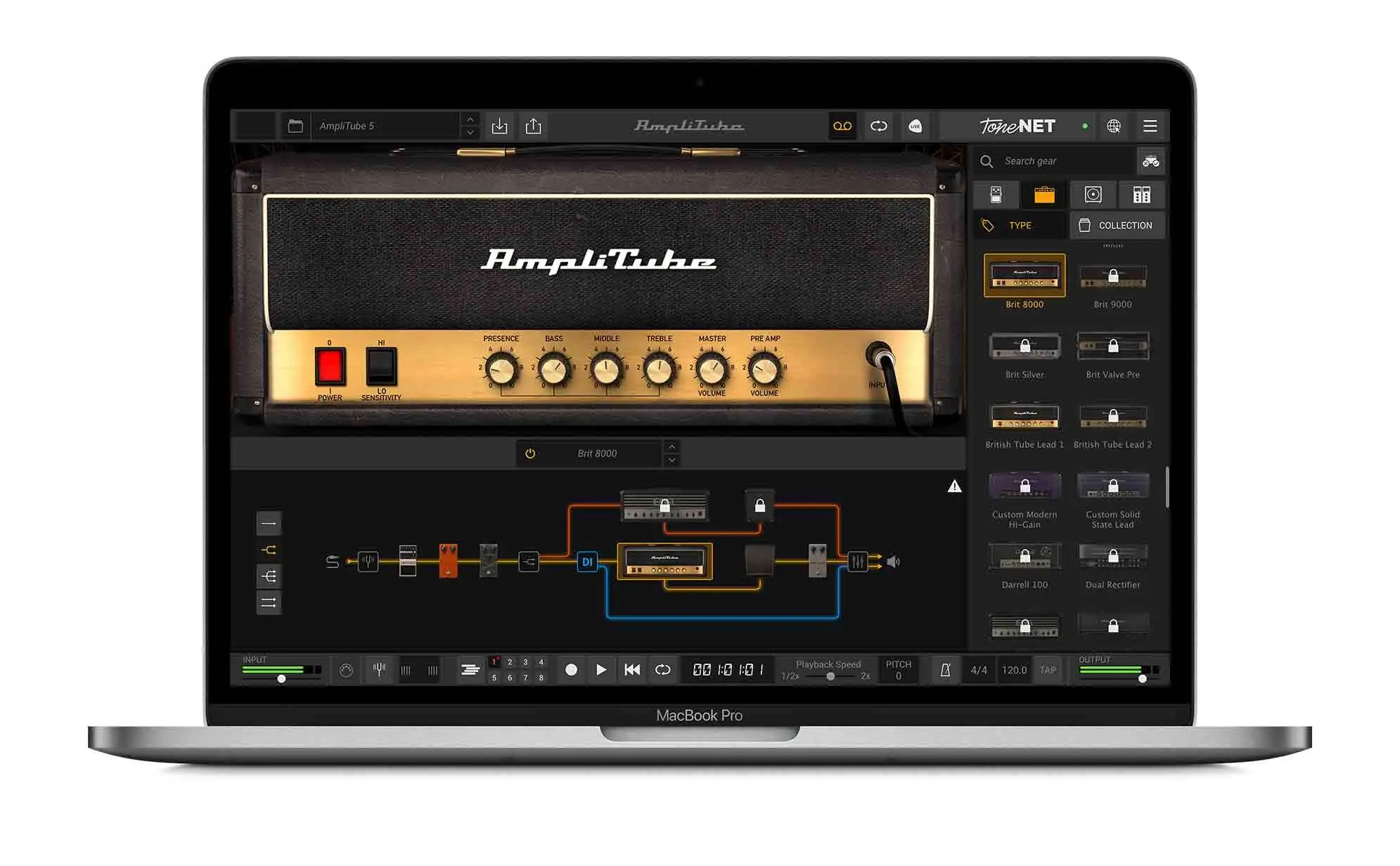
I feel it's important to talk about a valid alternative for those not ready to invest in a valve amplifier.
Amp simulators are VST plugins and software you can use to emulate the sound of tube amplifiers on your computer. They're designed to be as realistic as possible to their hardware counterpart, and their sound has been refined since the early days of DAWs (digital audio workstations).
There are many positives about amp simulators. First of all, they’re waaaay cheaper than a real tube amp. Plus, given it’s just a piece of software, it weighs nothing. Finally, because they’re affordable and usually sold as a bundle, you can test as many amps as you like through your DAW, which will help you craft your unique sound signature.
The downsides are more philosophical than practical. Nowadays many guitarists choose to go on stage with a digital guitar rig, which allows them to expand their sonic palette as opposed to using a valve amp.
However, endless sonic possibilities don’t always result in a better sound: sometimes, the narrower sound palette of a valve amplifier can enhance your creativity and simplify your workflow.
That said, many musicians admit that the sound of an amp simulator is not quite like that of the original hardware. Despite all the technological advancements, it's still hard to recreate the rich articulations of a vacuum tube amp.
Vacuum Tube Audio Fidelity: Tube Amps in Hi-fi Systems
Despite all the cutting-edge technology revolving around audio reproduction, tube amplifiers are still highly sought after, and for the same reasons musicians love them: because of their warm and natural sound signature.
One of the most crucial components of a tube amp in a sound system is the output transformer, which is designed to match the high output impedance of the tubes to the low speaker load, making sure the power transfer is appropriate and mitigating unwanted audible crossover distortion.
This process is extremely important to preserve the integrity of low frequencies and avoid signal degradation at higher signal levels. You might find some high-end systems with output transformer-less designs, but they are extremely expensive.
Tube types also matter, and we'll dedicate a section to the topic towards the end of the article. For instance, Class AB configurations using KT88 or 6L6 tubes offer a good mix of power output and tonal clarity that makes them a great combo in both music and home audio setups.
While they might not provide the same level of accuracy as their solid-state counterparts, power amplifiers used in hi-fi stereo systems can enhance certain tonal characteristics that make music more enjoyable, through an extended frequency response and a rich midrange. Audiophiles and the audio engineering society alike have praised tube gear for decades, simply because it creates a timeless soundstage that works well with high-fidelity audio.
All you need to do is check out publications like the Audio Amateur Press, Stereophile.com, or What Hi-fi to see how, even nowadays, there are plenty of companies worldwide creating tube amplifiers for high-end sound systems. From small independent manufacturers like Audio Hungary to established brands such as Audio Research and Western Electric, each producer aims to push the technology further, experimenting and emphasizing how tube rectifiers and feedback loop designs can take musical presentation to a new level.
All in all, tube designs in hi-fi audio systems create even-order harmonics and soft clippings that you can't quite get with a solid-state amp. This further enhances the power and immersiveness of music, bringing to life a more impactful soundstage.
The Pros and Cons of Vacuum Tubes in Music
Now that we’ve analyzed the differences between the main types of amplifiers, let’s summarize the pros and cons of valve amps, and why and if you should get one.
Pros
Vacuum tubes bring to life a warm and harmonically rich sound that's unlike any other amplifier. This is because of the even-order harmonics and clipping that tubes generate, making them iconic in heavier genres since the 1960s.
When pushed hard, they have this unique natural compression and saturation , creating exciting and unpredictable sound dynamics. Iconic rock guitarists and bass players have used them on stage and in the studio for decades, but valve amplifiers are popular across styles and genres, from funk to electronic music.
For those interested in vintage tones , vacuum tubes are the best way to recreate the sound of legendary musicians. While they might not be as versatile or reliable as solid-state amps, valve amplifiers can give you a sound that's just like the one your idols have.
Lastly, let’s not forget about the benefits of an analog setup in a hi-fi environment. Audiophiles generally appreciate the sound quality of vacuum tubes, because of their smooth sound and warm tones. They might not be as transparent as more technologically advanced amps, but their sound is enveloping and timeless, which makes them a great option in the hi-fi world.
Cons
Let’s start with the biggest downside: maintenance . Vacuum tubes can break easily, and even if they don’t, they have a lifespan of 500-1000 hours, and after that they should be replaced.
Valve amps are heavy and bulky . Most valve amps require two people to carry them on stage. That, and the fact they’re quite fragile , makes them harder to handle than a solid-state amp.
Tube amplifiers require warm-up and cool-down time .
The amount of warm-up time required for the amp to sound optimal varies. Some people say you should wait 5 seconds, others up to one hour. It depends on your amp, the valves, and your taste. Similarly, after rehearsals or concerts, you should wait until they cool down before loading out, to avoid thermal shock to the tubes.
Finally, all valve amps are different . It’s unlikely to find two tube amps that sound and behave the same: some might be more sensitive to room temperature, and others can change their sound after warming up. All in all, there’s a percentage of sonic unpredictability when it comes to tube amps.
Most Popular Guitar Tube Amplifiers
Fender Twin Reverb
The Fender '65 Twin Reverb is an iconic amp that’s been widely used in a variety of genres, from rock, blues, jazz, country, and beyond.
Guitarists go for the Twin Reverb because of its massive headroom and powerful clean tones in any setting. This amp is as versatile as they get, so whether you’re playing acoustic music or cranking up a rock solo on stage, the Twin Reverb is a workhorse that'll most likely meet your needs.
Marshall JCM800
You might say the Marshall JCM800 2203 is the tube amplifier that defined the sound of heavy metal and hard rock. This 100-watt, all-tube head amp has been used by the greatest guitarists, from Angus Young (AC/DC) to Kerry King (Slayer) and Zakk Wylde. The JCM800 creates a unique sound that fits perfectly with heavier genres: tight, punchy, and perfect for both powerful leads and crunchy rhythms.
The amp features a simple, single-channel design with a 3-band EQ, and its power tubes and tube circuits provide the organic warmth and dynamic response that rock artists need. The JCM800 is designed for maximum tonal aggression, with soft clipping and harmonic distortions that offer the perfect edge.
Vox AC30
The Vox AC30 needs no introductions. To me, this is the most versatile and enjoyable guitar tube amp there is.
Powered by three 12AX7 preamp tubes and four EL84 power tubes, this 30-watt amp brings to life the classic British tones you have heard countless times, from Pink Floyd to Queen and many more.
The AC30C gives you a wide range of sounds across its two channels, normal and top boost. It comes with two 12" Celestion Alnico Blue speakers, and the onboard tremolo and spring reverb effects, controlled via a footswitch, can further enhance the dimension of your sound.
Perfect for the studio as well as on stage, the power and versatility of the VOX AC30 make this amp a must-have for musicians who want to create a timeless sound.
Most Popular Bass Tube Amplifiers
Ampeg SVT
The Ampeg SVT is one of the most influential bass amps in music history, used by some of the most famous bass players in the world, including Sting, Robert Trujillo, Cliff Williams, and Krist Novoselic.
There are many models falling into the SVT umbrella, and they’re all excellent. They come with six 6550 power tubes, 300 watts of power, and two selectable channels to create multiple flavors of early rock and roll music.
The output transformer keeps the amp’s power under control, while in more recent models you can find modern features like XLR DI output. If you can invest 2k on a head amp, the SVT is a fantastic option.
Markbass Little Mark Vintage
The Markbass Little Mark Vintage is a versatile amp head for bass guitars that perfectly combines classic warmth and modern punch. It comes with a tube preamp, flexible EQ with preset profiles, and a transformer-based DI.
It’s lightweight, built to last, and offers advanced features like the foot-switchable mute and the Markbass’s patented MPT power amp. With 500 watts of power, it’ll work magnificently in all scenarios, from rehearsal rooms to large venues.
Ashdown CTM-300
With 300 watts of power from six KT-88 tubes, the Ashdown CTM-300 delivers punch, clarity, and headroom, perfect for bass players across genres. It comes with plenty of tone-shaping features, a tube-driven effects loop, and high-quality DI output, so you can use it both on stage and in the studio without issues.
What Vacuum Tubes are Used in a Tube Amplifier
Getting the best tube sound requires knowing which tubes can deliver the sound you envision. Below is a list of the best tubes you can use either on electric guitar amplifiers or preamps for stereo systems.
Power Tubes:
- EL34 : Punchy midrange and aggressive breakup. The EL34 produces the classic "British" rock sound, and you’ll commonly find it in Marshall amps.
- 6L6 : The 6L6 offers clean and smooth tones with lots of headroom, making it ideal for blues, jazz, and country. It’s usually used in Fender amps.
- EL84 : A smaller power tube used in amps like the Vox AC30. It enhances bright tones with an early breakup, perfect for rock and indie.
- 6V6 : Similar to the 6L6 audio tubes but with less power.
- KT88/KT66 : High power with a tight bass response and clear highs, these tubes are used in both bass amps and high-wattage guitar amps.
Preamp Tubes:
- 12AX7 : The most popular preamp tube. It offers high gain and an organic sound, so it’s great when you want to create a warm and harmonically rich tone.
- 12AT7 : A lower-gain tube compared to the 12AX7, It gives plenty of headroom and a clean sound.
- 12AU7 : Another lower-gain tube, often used in hi-fi and audio equipment because of its transparent tone.
- ECC83 : The European equivalent of the 12AX7, used in British amplifiers like Marshall and Vox.
Final Thoughts
I hope this guide helped clarify most of the doubts associated with vacuum tube technology in music. While valve amps might be expensive and demanding when it comes to maintenance, there’s a reason why they’re so popular to this day: they offer a uniquely rich sound, both on stage and in a listening room.
For those who can't afford them, there are plenty of valid alternatives, which we have covered extensively in this piece. If you feel like you're not ready yet to go full-analog, both amp simulators and solid-state amps offer great solutions for your sound. Whichever your choice will be, I hope you'll find the right gear to create your unique signature sound.
Good luck!


